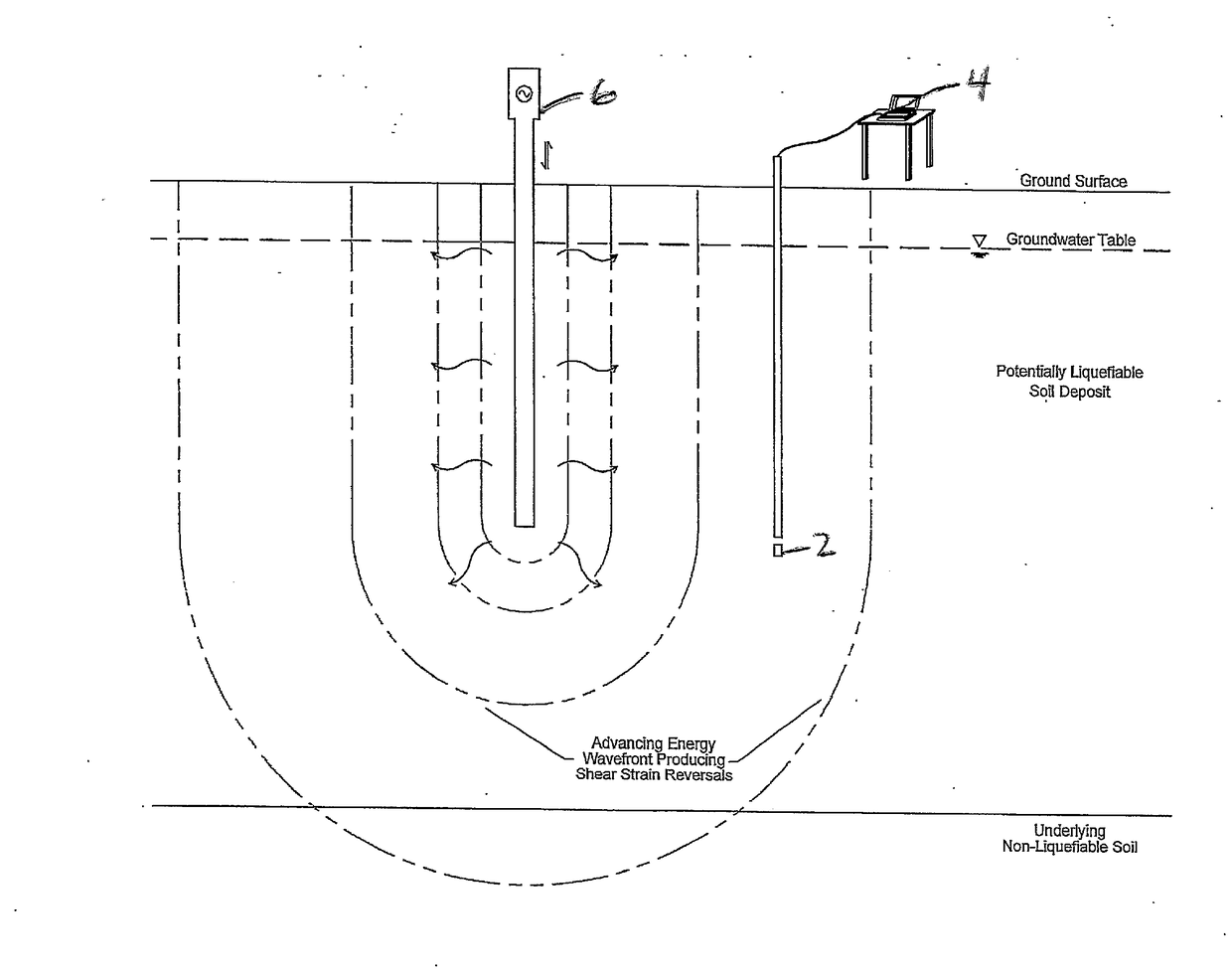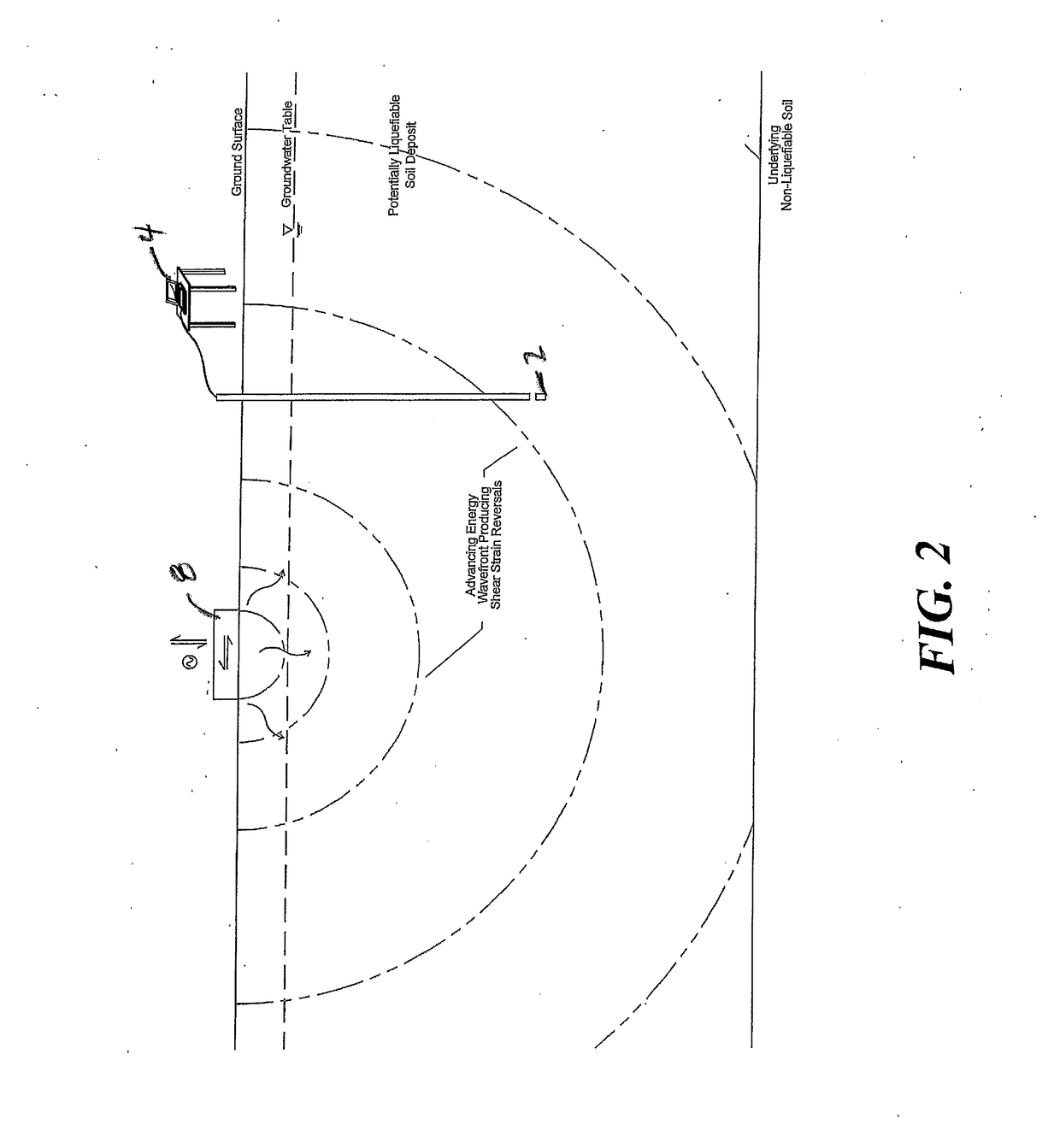Method of soil liquefaction testing and remediation
a soil liquefaction and remediation technology, applied in earth material testing, construction, foundation engineering, etc., can solve the problems of repeated shearing deformation in overlying soil, liquefaction in saturated cohesionless, and hundreds of miles of destructive energy
- Summary
- Abstract
- Description
- Claims
- Application Information
AI Technical Summary
Benefits of technology
Problems solved by technology
Method used
Image
Examples
Embodiment Construction
[0021]The apparatus and method of the present invention for testing and subsequent remediation of liquefiable soil for earthquake liquefaction protection for a structure or work thereon involves instrumenting a potentially liquefiable soil deposit with equipment capable of measuring pore water pressure generation / dissipation and shear strain reversals in-situ. Determining that a soil deposit at a site is potentially subject to liquefaction may be based on assumed or estimated soil index properties. The soil deposit is subjected to mechanically-produced shear strain reversals (soil accelerations) in excess of those anticipated from the design seismic event for durations longer than the design seismic event. The shear strain reversals may be produced at varying depths.
[0022]The present invention allows the subject site to be tested and treated according to soil accelerations of varying design earthquakes, (e.g. Moment Magnitudes, MW, ranging from 5.0 to 9.5). The soil accelerations ma...
PUM
| Property | Measurement | Unit |
|---|---|---|
| pore pressures | aaaaa | aaaaa |
| frequency | aaaaa | aaaaa |
| pore pressure | aaaaa | aaaaa |
Abstract
Description
Claims
Application Information
 Login to View More
Login to View More - R&D
- Intellectual Property
- Life Sciences
- Materials
- Tech Scout
- Unparalleled Data Quality
- Higher Quality Content
- 60% Fewer Hallucinations
Browse by: Latest US Patents, China's latest patents, Technical Efficacy Thesaurus, Application Domain, Technology Topic, Popular Technical Reports.
© 2025 PatSnap. All rights reserved.Legal|Privacy policy|Modern Slavery Act Transparency Statement|Sitemap|About US| Contact US: help@patsnap.com



